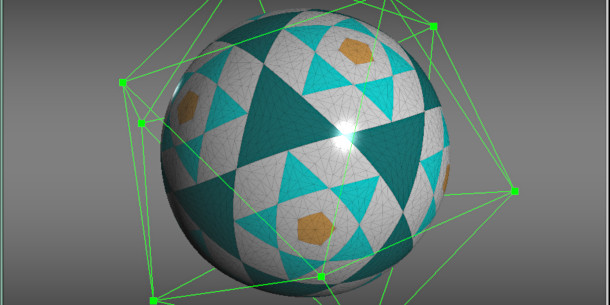Pixar releases Opensubdiv 3.4

Pixar has released OpenSubdiv 3.4, the latest update to its set of open-source libraries for high-performance subdivision surface modelling, used in a wide range of DCC software.
The update brings the set of features supported by Loop subdivision in line with that supported by Catmull-Clark subdivision, and extends OpenSubdiv’s Far API layer.
A visual effects industry standard for evaluating subdivision surfaces
The same code used internally at Pixar in feature animation production, OpenSubdiv is designed to handle dense real-world production assets, and scales to “massively parallel CPU and GPU architectures”.
Since its first release in 2013 – and following a change to an Apache licence later that year – it has been implemented in many DCC tools, including 3ds Max, Blender, Cinema 4D, Houdini, Maya and Modo.
OpenSubdiv is also part of the VFX Reference Platform, the set of shared tools and libraries intended as a development target for visual effects software, with version 3.4 forming part of the draft 2020 standard.
New in OpenSubdiv 3.4: Loop subdivision meshes now support all the same features as Catmull-Clark
OpenSubdiv 3.4 introduces support for triangular patches when drawing or evaluating Loop subdivision meshes: one of the two subdivision types available.
The change brings the features supported by Loop subdivision in line with that of the more widely used Catmull-Clark (Catmark) subdivision, including creases, face-varying patches and non-manifold topology.
However, the underlying requirement that Loop meshes are purely triangular remains in place, whereas Catmull-Clark subdivision can be applied to primarily or wholly quad-based meshes.
Other changes include support for double precision and for the construction of patch tables that apply to an arbitrary subset of faces within a mesh within OpenSubdiv’s mid-level Far API layer.
Double precision is currently not directly exposed in the highest-level Osd layer, which is used to draw subdivision surfaces via hardware backends like CUDA, OpenCL, OpenGL and DirectX.
Added in recent updates: better handling of sharp edges, support for Apple’s Metal API
Other new features added since we last wrote about OpenSubdiv include better handling of sharp edges and of face-varying evaluation, both added in OpenSubdiv 3.1.
OpenSubiv 3.3 added support for drawing or evaluating subdivision surfaces via Apple’s proprietary Metal API, now the primary vehicle for GPU access within macOS and iOS software.
Availability and system requirements
The source code for OpenSubdiv 3.4 is available under a modified Apache 2.0 licence. It can be built for Windows, Linux or macOS: you can find a list of requirements here.
